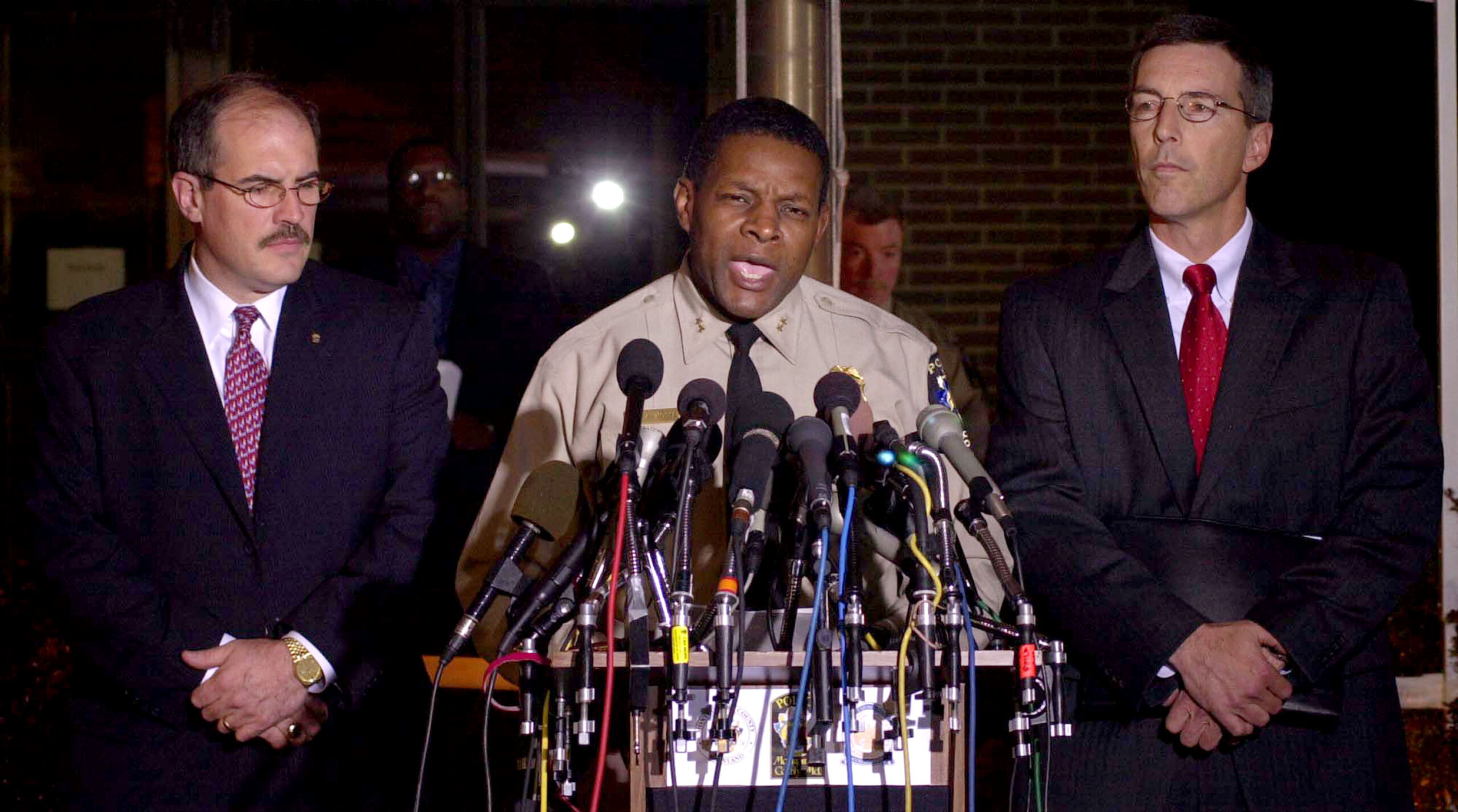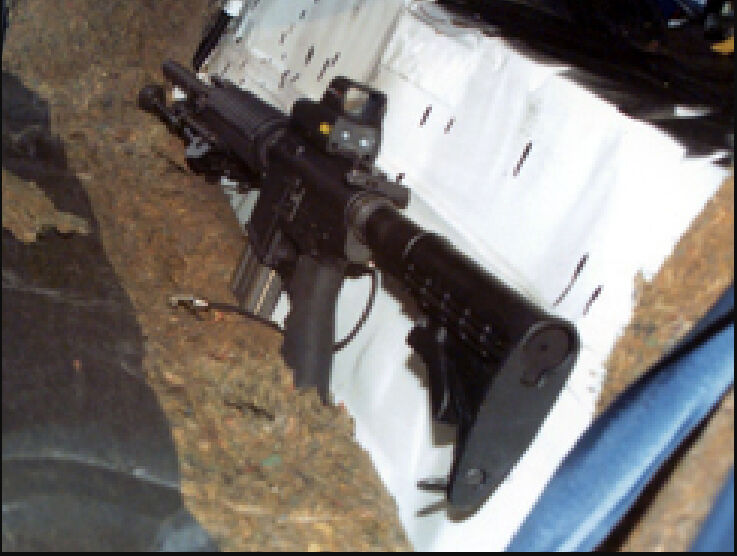If today’s technology had been around 20 years ago, the Beltway snipers likely would have been caught sooner, says Michael Bouchard who headed ATF’s sniper investigation.
As the 20-year anniversary of the Beltway Sniper shooting rampage nears, the man who headed the investigation at the federal Bureau of Alcohol, Tobacco, Firearms and Explosives says new technology would have likely stopped the shooting sooner.
During a three-week period in October 2002, John Allen Muhammad and Lee Boyd Malvo shot and killed 10 people, and wounded three others in Maryland, Virginia and DC
At the time, Michael Bouchard was ATF’s special agent in charge during the sniper investigation, as the head of the agency’s Baltimore field office. Bouchard appeared often during news conferences with then-Montgomery County Police Chief Charles Moose and Gary Bald, the agent who headed the FBI’s task force efforts.

“Ballistics was crucial to solving this case,” Bouchard told WTOP. He also said technology that has been invented since the rampage would likely have enabled law enforcement to identify, find and arrest Muhammad and Malvo more quickly.
Early on, the public was informed that the shootings appeared to be linked. The first shooting came on Oct. 2, 2002, when James Martin was shot in Montgomery County. The following day James Buchanan, Premkumar Walekar, Sarah Ramos, Lori Ann Lewis-Rivera were also shot and killed in Montgomery County, and Pascal Charlot was killed in DC near the Maryland line.
“Many cases we were able to recover identifiable projectiles from the victims, which were compared every time we had a shooting with previous shootings,” said Bouchard.
“We also found spent shell casings at some of the scenes, and when we examined those through the National Integrated Ballistics Identification Network, we were able to determine the spent shell casings came from the same rifle.”
At the crime scenes, Bouchard said ATF agents also worked on trajectory analysis.
“We’d examine each scene and attempt to determine the angle from which the shot was fired, which also enabled us to determine distances from which the firearm was fired.”

Identifying the suspects
In 2002, the sniper task force raced to apprehend whoever was shooting, apparently at random, throughout the National Capital Region.
“The software that law enforcement used to connect the dots with intelligence and information that was available through various departments was pretty sparse,” said Bouchard. “Now there’s new software that enables law enforcement agencies to quickly gather information and share it quickly with multiple jurisdictions. That would have been a big help for us 20 years ago.”
Gunshot detection technology is more prevalent now, in which sensors in a jurisdiction can quickly detect gunfire and point police toward where the sound emanated.
“They can respond more quickly to a scene when a gunshot takes place, rather than waiting for someone to call it in,” said Bouchard.
“Had that been available to us 20 years ago, that may have helped a quicker police response to some of the shootings, and could have possibly apprehended Muhammad and Malvo much more quickly,” he said.
In addition, the gunshot detection systems are linked with the National Integrated Ballistics Identification Network, providing more information on a single format, which can be shared between agencies.
“So, when a projectile or spent shell casing is examined, it shows here’s where the shot took place, this is the type of weapon, and here’s the type of firearm that may have been used,” said Bouchard.
In the two decades since the Beltway Sniper shootings, Bouchard said the basic role of the forensics examiner remains largely the same — to link bullets to guns and to the person who fired them.
However, there are so many television shows dealing with forensics, when a case goes to trial, prosecutors and the forensics examiner can anticipate what questions judges might have.
“For instance, ‘Why didn’t you find fingerprints on a piece of evidence?’ It’s up to the examiner to say how difficult it is to find fingerprints,” said Bouchard. “Or, I’ve seen this on TV, ‘Why couldn’t you have made determination in identifying a firearm?’”
Bouchard said it would be up to the examiner to explain that a projectile may have been too badly damaged to make a match with another case.
Closing the book
On the morning of Oct. 24, 2002, Muhammad and Malvo were arrested at a rest stop off Interstate 70, near Myersville, Maryland.
Muhammad and Malvo were sleeping in a 1990 Chevrolet Caprice, with New Jersey license plates. A hole was cut in the back of the trunk.
Also in the car was a Bushmaster rifle.

“We compared that rifle with all the spent shell casings and projectiles that were identifiable, and that allowed us to link all the shootings together, conclusively, said Bouchard.
“The murder weapon used in all these cases that was terrorizing the DC-metro area had been reserved and the persons responsible for the shootings were under arrest,” he said.
Muhammad was convicted of capital murder in Virginia, and was executed in 2009. Malvo, who was 17 at the time of the shootings, has been convicted of murders in Maryland and Virginia, and is serving several life sentences.
Maryland’s highest court has ruled Malvo must have his life in prison with no chance of parole reconsidered in Montgomery County, because of recent US Supreme Court rulings on life sentences for juveniles. Attorney General Brian Frosh is considering appealing the ruling to the US Supreme Court.